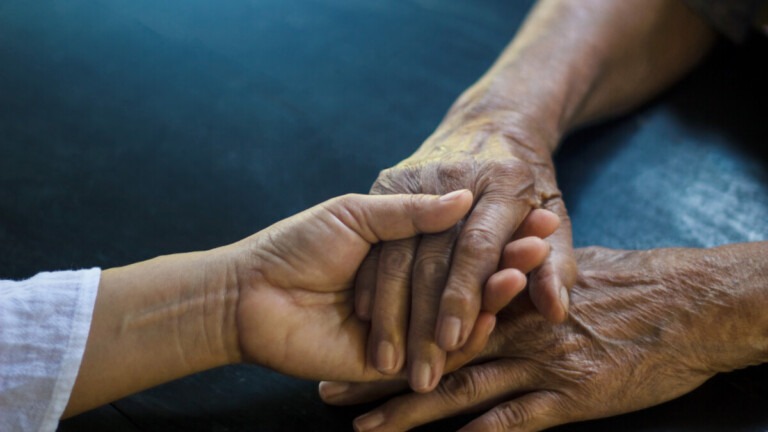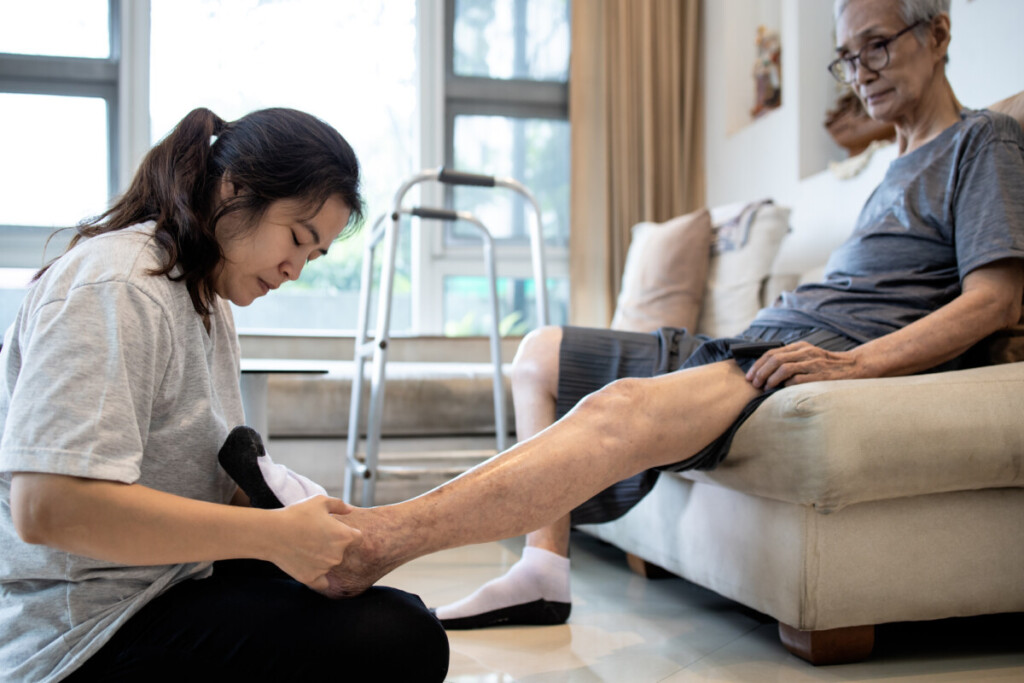Wearable IoT Devices to Help Patients with Alzheimers

There are more than 50 million people suffering from Alzheimer’s disease or some form of dementia worldwide. Conditions like Alzheimer’s and dementia can present a wide range of treatment challenges for caregivers, especially when they cannot be with the afflicted at all times. Ensuring the safety and proper care of the patient is paramount, of course, yet treatment without the ability to consistently monitor a patient’s condition creates a number of risks. Fortunately, there are already a variety of wearable IoT devices that can help provide the best care and safety possible.
Smart Watches Are The Most Popular Wearable IoT Devices
Smartwatches are probably the most popular consumer IoT wearable devices on the market. Their onboard sensors gather lots of relevant information about a person’s health and activity that can be beneficial in caring for someone suffering from Alzheimer’s or dementia. Using these devices, caregivers can make sure their patients are getting sufficient levels of activity, keep a close tab on their heart rate, and even monitor sleep habits – all of which are important factors in an Alzheimer’s patient’s health and wellness.
Having a smartwatch link data to a caregiver’s web portal allows them to monitor these factors at any given time, and the benefits don’t stop there. Not only do smartwatches capture important health data, many also contain GPS trackers as well. Given that an unfortunate component of diseases like Alzheimer’s and dementia is that patients can often wander and get lost during one of their spells (often while forgetting what they were doing or where they were supposed to be going), the ability to keep tabs on a patient’s location can be vital. More than 5 million Americans are affected by Alzheimer’s, and approximately 60% of them are prone to wandering. A simple GPS-empowered smart watch can allow a caregiver to locate someone who has become lost while allowing the patient the dignity of not wearing an obvious tracking device that would highlight the condition to strangers.

Alert Buttons Can Be a Life Saver
One TV commercial that may be stuck in your memory is the ‘Help, I’ve fallen, and I can’t get up’ ad from Life Alert. While the spot has often been parodied for some of its questionable acting, I have come to realize that, as my relatives get older, falls are an all too real and all too common danger that elderly people face.
IoT devices like the LifeAlert button can be installed in a home or worn around a patient’s neck. They utilize cellular connectivity to provide a direct and secure connection to their proprietary help portal/call center, allowing respondents to request assistance while also providing caregivers with their GPS information. This can aid someone who is potentially hurt while also resolving any issue with the person having wandered. The call centers will alert any emergency contacts linked to the patient so that they can be notified. The downside to this system, of course, is that it is reactionary, relying upon something bad happening as opposed to intermittent monitoring.
E-Textiles May be the Future of Wearable IoT Devices
Though it’s still an emerging technology, E-Textiles may be the next big trend in wearable IoT devices – particularly for people suffering from conditions like Alzheimer’s and dementia. Modern E-textiles have grown so sophisticated that the smart garments themselves are the sensors, boasting embedded microcomputers that can review, respond to, and even (potentially) anticipate data types.
One very interesting example was actually a product developed by a former co-worker of mine, (though that evidently never made its way to market) and called UpBed. This was an IoT application that could connect to smart socks and alert caregivers when a patient with Alzheimer’s or dementia got up out of bed. The idea was to deploy these wearable IoT devices in assisted living centers where staff are on-premises and may have a variety of patients who need varying levels of care. The garments can help caregivers monitor patients who are fall risks get needed assistance using the restroom or showering, and provide a low-profile means of tracking patients prone to wandering.
Similar devices can also be adapted to monitor patients’ vitals while sleeping. Smart garments, whether they are socks, hospital gowns, or otherwise, provide less intrusive means than other sensors, making them more attractive options for patients and their families.

Medical Wearable Adoption is Only Growing
The Market for medical wearable IoT devices is expected to reach a valuation of $174.48 Billion USD by 2030, and the treatment of chronic conditions such as Alzheimer’s and dementia is one of the many reasons why.
Wearable IoT devices have a wide variety of applications within the healthcare field, and while the aforementioned use cases are not necessarily only used to care for patients with Alzheimer’s Disease, they provide some prime examples of how simple IoT devices can provide some elevated level of care to these patients.
………………
Got a question for Soracom? Whether you’re an existing customer, interested in learning more about our product and services, or want to learn about our Partner program – we’d love to hear from you!





